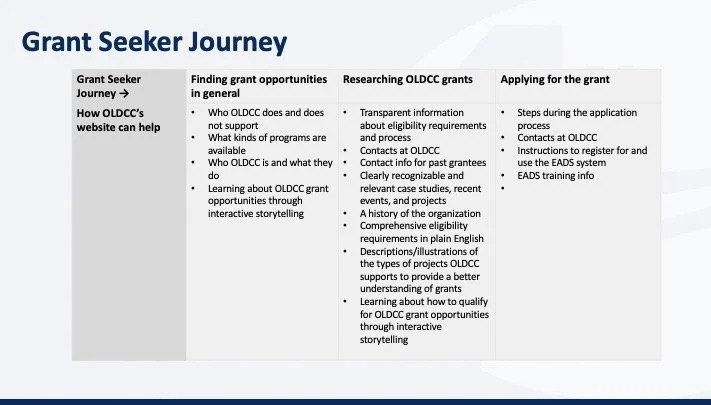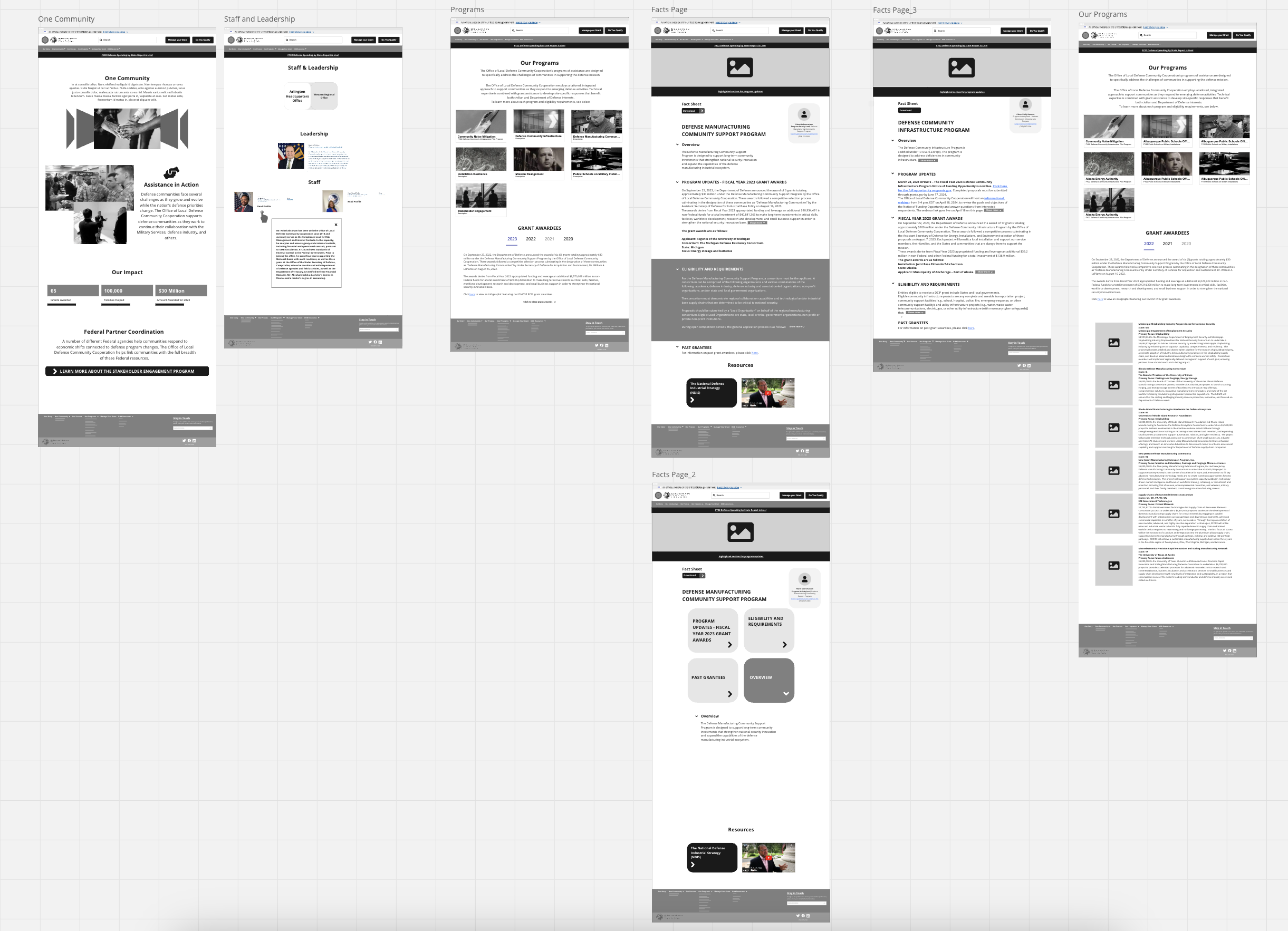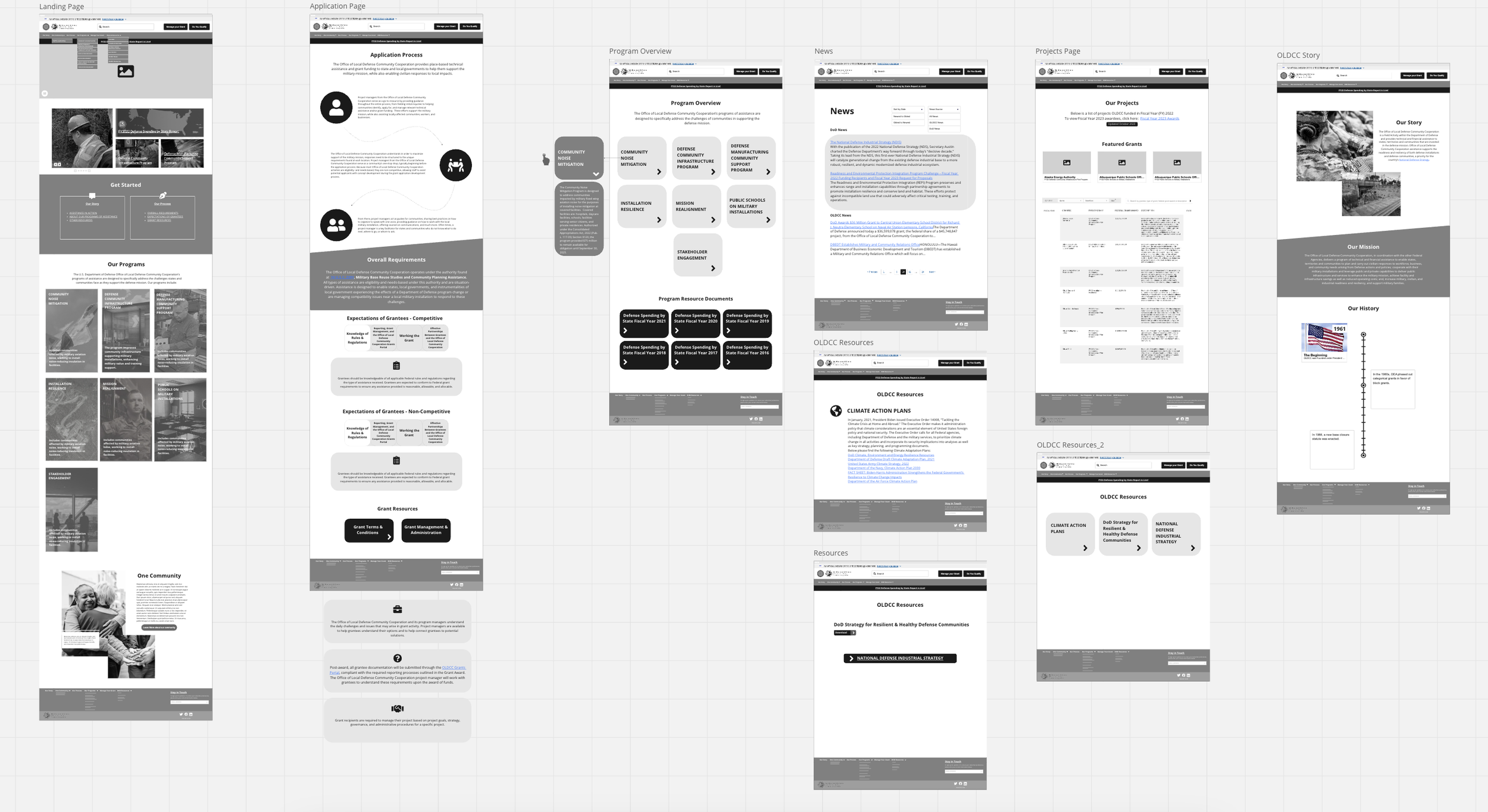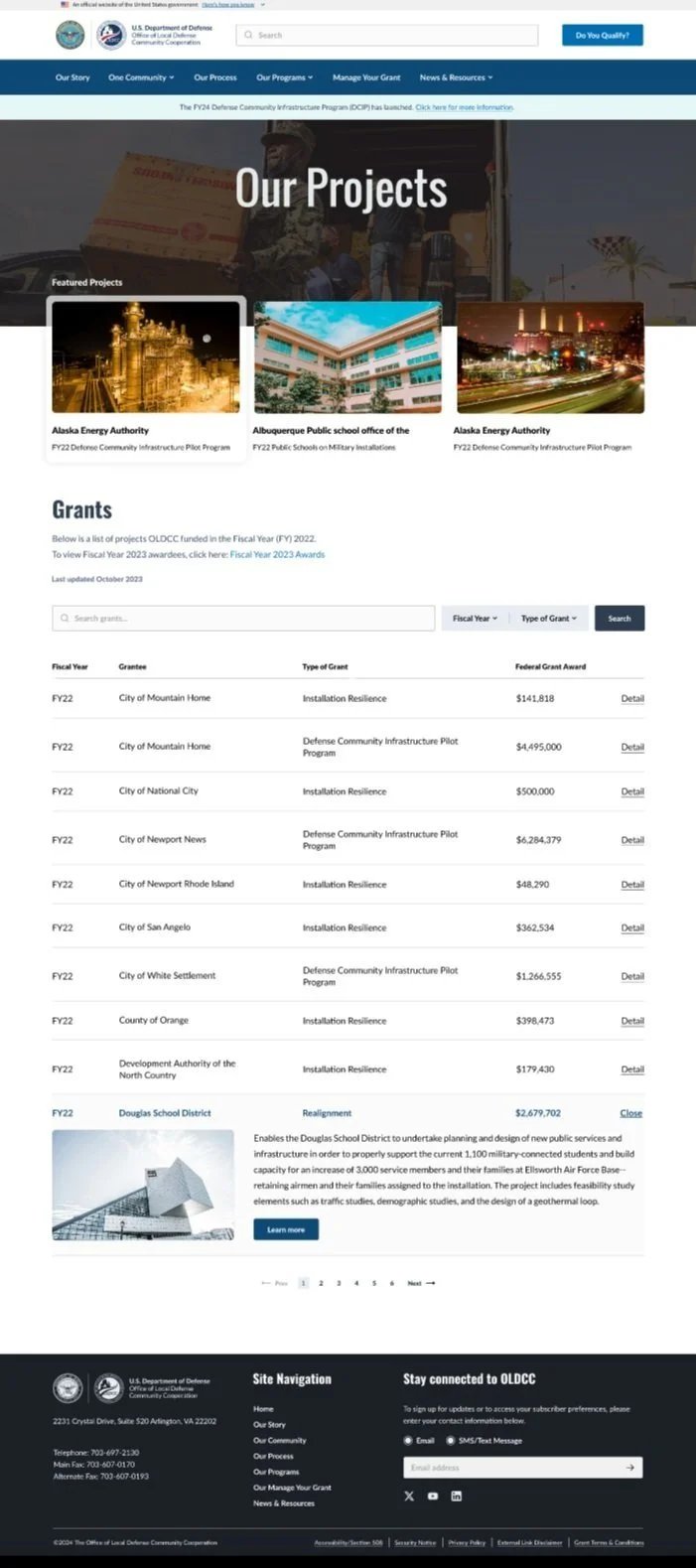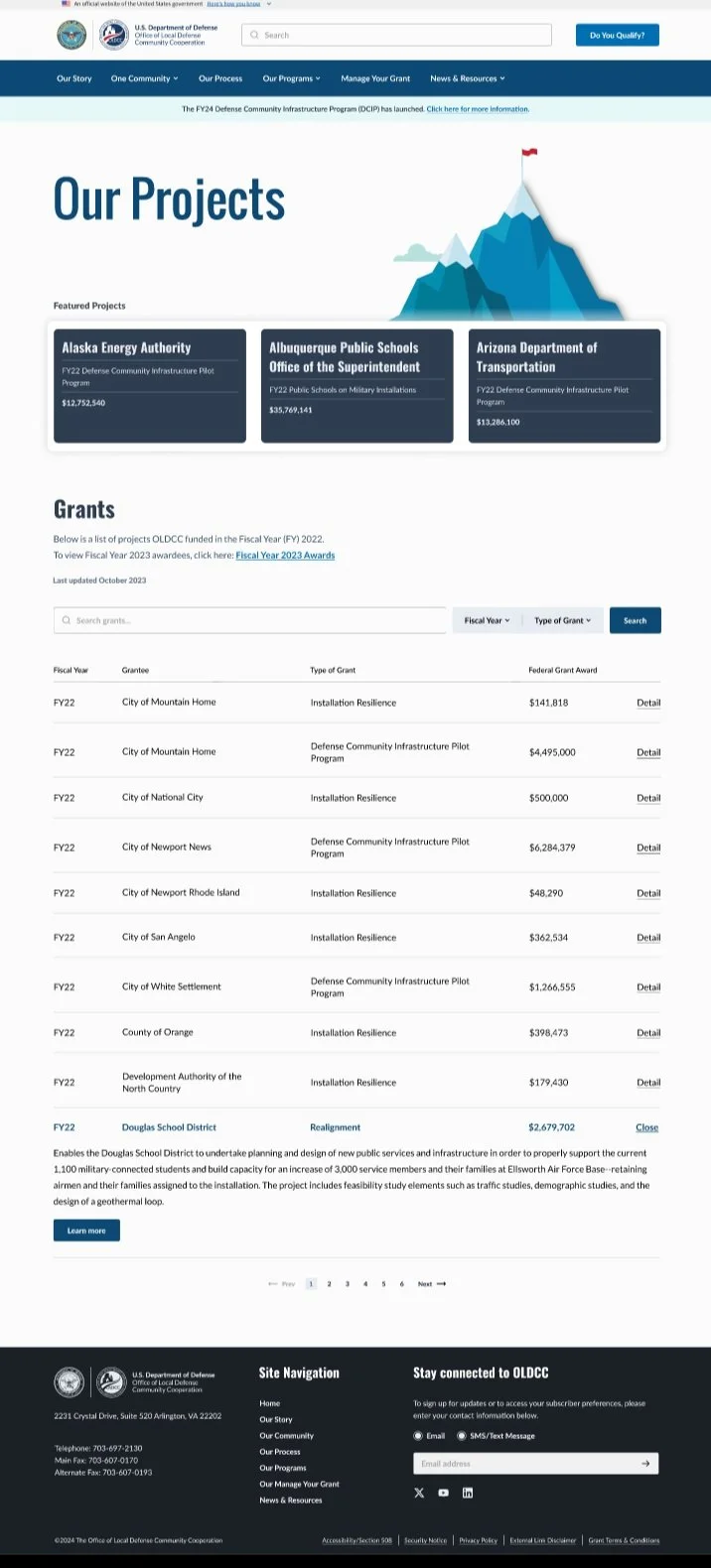OLDCC.gov
The original website of OLDCC was challenging for potential grantee applicants to navigate. As a UX designer and researcher, my role was to identify the obstacles preventing users from finding the information they needed while ensuring 508 compliance
Role
UX Design
UX Research
Rebranding
Client
Office of Local Defense Community Cooperation
Programs
Miro
Figma
Confluence
Time
6 Months
Analysis
Personas
Community Staff: These are individuals who work for or represent the community.
Community Planners: These are professionals who work on planning and development projects.
Engineers: These individuals are responsible for designing, building, and maintaining infrastructure.
Architects: Architects are responsible for designing buildings and structures within a community, often working on projects that contribute to the community's overall design and functionality.
City Manager’s Office Employees: These are employees who work directly for the city manager, often involved in administrative and managerial roles.
Journey
Problems
Problems
Solutions
Solutions
Solutions
Scenarios
Within organic search, most traffic comes from OLDCC or program name keywords. The next highest portion comes from base/location name keywords.
User Persona Attributes
Novice OLDCC grant seekers
Seasoned OLDCC grant seekers
General grant seekers (who can be unqualified)
Finding Information about the Program
Problems
Internal Users
They want easier access to information about projects. I.e., What are they? How do they get funded?
The search process can be difficult to use and hard to find information.
Most users have some familiarity with OLDCC but have limited details about what OLDCC does.
External Users
They are searching for:
Requirements and process for applying Eligibility
Small businesses are interested in partnerships.
How do we ensure that communities can access additional resources (example: funding from FEMA, CISA, DHS)
Federal agencies want to learn more about programs and how to leverage them.
There is an opportunity to make a connection with other DOD programs that OLDCC works with.
Lack of Interactivity and Storytelling
Internal & External Users
Information about projects are difficult to find.
The website is not really engaging, and could benefit from animations, graphics...
Images and photos are old/not relevant and should be updated to better display information about programs
Make the locations of projects easier to find.
No Scenarios
Internal & External Users
Community planners don’t know who OLDCC is or what they do.
Steps on how to apply for a grant should be visible.
Make the grant application instructions more visible on the site by adding a step-by-step process on the application page. Another recommendation can be to update the "Process Overview" page to "Application Process" to highlight how to apply.
Alleviate confusion between qualified and unqualified visitors.
Include a set of criteria with eligibility requirements that shares information about qualified or unqualified applicants.
The example to the right has a list of overall requirements, but it will need to include more details.
Update the mission statement to provide more detail into what the organization is and what it does.
On the homepage, create small visuals that share brief descriptions of each program, with the option to expand each section for more information.
"What are OLDCC's programs?" "How they are funded?“ a visual would live on the homepage with a small explanation and each section would be clickable to expand to each program.
Add a "Do you qualify?" section/button to the homepage.
Include step-by-step instructions on the application process.
Add a "More details" button underneath to open another page.
To improve readability, consider adding more white space to pages and reducing the use of textures.
Infographics not only display relevant information but also serve as a powerful tool for storytelling.
Create a timeline sharing OLDCC's history on the homepage or a new page: "Our Journey:
Continue to use the homepage banner to highlight timely announcements.
Create an experience that properly catalogs community projects.
Explore what these could look like in the wireframe process.
Across the site, move away from text-heavy pages and use more imagery and infographics to share information.
Showcase higher-quality photography from projects.
Bringing back some Project Pages because most “clicks from search” come from them.
Create case studies
Ex: a data page that is community focused
Ex. "X amount of people helped, X schools built, etc.
30-second informational video on the homepage explaining what's on the site/where to find it
Instructional Design principles could be beneficial for scenario building.

